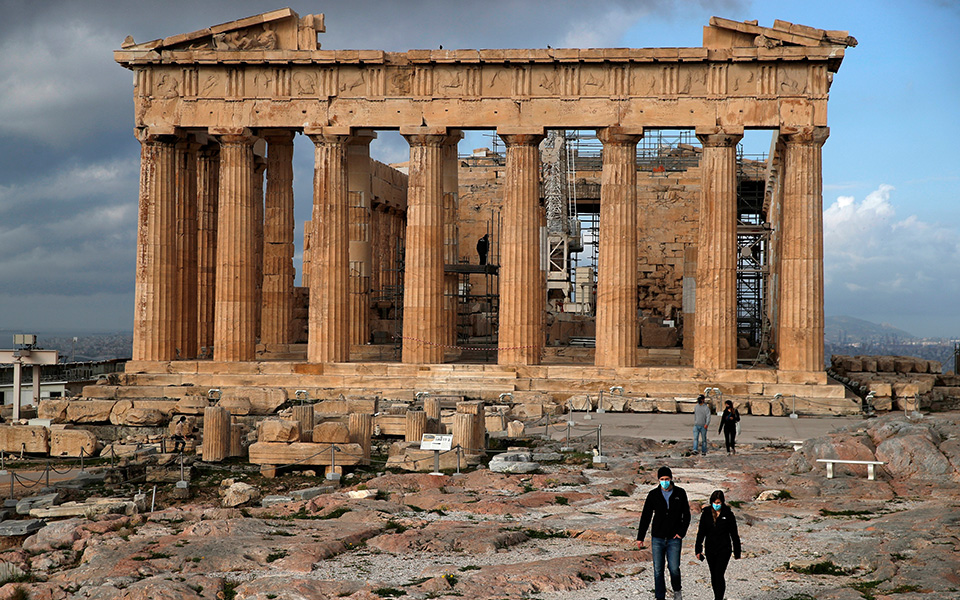By Iliana Magra
Athens, drenched in light, stretches out below in all directions while, in the distance, the sea shimmers, and around you stand the amazing monuments of the Acropolis. Whether you’re up here on the Sacred Rock for the first or the umpteenth time, it’s always awe-inspiring.
It’s the 22nd of March, and the gates of the archaeological site of the Acropolis have finally reopened. During the quarantine, the gleaming Pentelian marble of its structures was a shining beacon for myriads of residents in Athens, but it was a beacon that could only be admired from a distance.
“I feel grateful,” tour guide Athena Koutsouris says as she walks towards the Propylaea. She hasn’t been here in five long months, and she’s definitely missed it. “It’s a mental uplift,” she says.
Looking around, there are relatively few visitors; the Acropolis seems a virtually private paradise. Many of the visitors, Greeks and non-Greeks, are here on their own, but even those who are with friends aren’t speaking much to one other, and they’re keeping their voices almost to a whisper – the only loud sound you hear is that of the machinery being used to restore the monuments.
“I like the fact that it’s not crowded; it’s an opportunity,” says Demosthenes Dimitropoulos, adding that the visit is a good break from quarantine. For his partner, Olga Boronillo, it’s a dose of positive energy. “You see something different in the Acropolis every single time– today, I’m experiencing it in a very different way,” she says, adding that she now feels optimistic about the future. “The pride you feel here cannot be compared to anything else,” she adds.
Themis Economides came at nine this morning – three hours later, he’s still staring at the Parthenon. He’s visited the site dozens of times, but he says he just couldn’t miss today’s visit. “It’s a place someone draws energy from,” he says, “and we need to draw energy.”

© AP/Kostas Tsironis
SOMETHING DIFFERENT
A lot of people were eagerly awaiting the opening of the Acropolis – among them was Konstantin Berlage, a 22-year-old German Erasmus student in Athens, who was hoping to visit it for the first time. From the moment the re-opening of the archaeological sites was announced, he and his friends knew where they would go first. “We finally did something other than just walk,” says Berlage’s friend Luca Luipold.
The Barkusky family – Nicholas, Lise and their two daughters – got really lucky. Arriving from France, they came to the Acropolis without knowing that it was the first day of its reopening – much to their delight, they found it open.
Others have been eager for the Acropolis to open for professional purposes. The archaeologist Panos Valavanis was waiting to continue his studies of the site, but the reopening of the Acropolis isn’t just a relief for this reason. “Monuments take on one of their main roles again,” he says, noting that a magnetic space with “vibrations,” such as those that exist on the Acropolis, can only be fully appreciated when there’s a real human presence. “Monuments without people,” he says, “are almost dead.”
This article was first published in Greek on kathimerini.gr.










